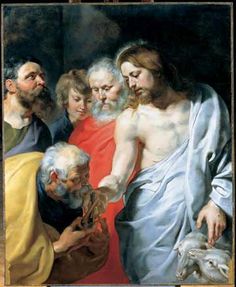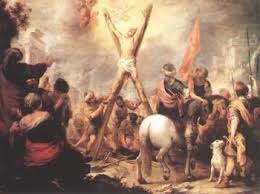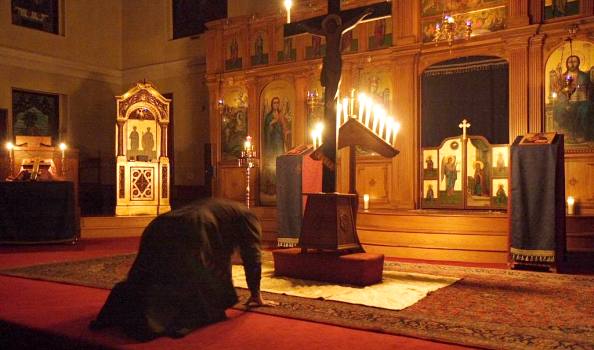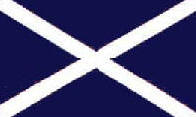
Summary : St Andrew, Apostle. Born at Bethsaida (Galilee), A fisherman and a disciple of John the Baptist, introduced his brother, Simon Peter, to Jesus and became one of the first twelve to follow Christ. Mentioned a number of times in the gospels, for example, in introducing some Gentiles to Jesus (John 12:20f).
 Andrew, a Galilean fisherman from Bethsaida, was the first disciple to be called by Jesus. He is said to have preached the gospel in Greece and to have been crucified at Patras. He is patron of Scotland, Russia and Greece.
Andrew, a Galilean fisherman from Bethsaida, was the first disciple to be called by Jesus. He is said to have preached the gospel in Greece and to have been crucified at Patras. He is patron of Scotland, Russia and Greece.
Patrick Duffy outlines what is known about him.
Disciple of John the Baptist
Andrew had been a disciple of John the Baptist. He was one of the two standing with John when Jesus passed and John stared hard at him and said, “Look, there is the lamb of God“. The two disciples followed Jesus, who turned and asked them, “What do you want?” They answered, “Rabbi, Where do you live?“ “Come and see.“ was Jesus’s reply. They went and saw where he lived, and stayed with him the rest of the day.
 Andrew Brings Simon to Jesus
Andrew Brings Simon to Jesus
Early next morning, Andrew met his brother Simon and said to him, “We have found the Messiah,” and he took Simon to Jesus. Jesus looked hard at Simon and said, “You are Simon, son of John, you are to be called Cephas”, meaning Rock (Jn 1:35-42). Mark has a slightly different version: both fishermen brothers were casting their net in the lake, when Jesus said, “Follow me and I will make you into fishers of men. And at once they left their nets and followed him.” (Mk 1:16-18).
Other Mentions in the New Testament
Peter subsequently takes the leadership role, but Andrew is always in the first four in the lists of the names of the twelve apostles. It is Andrew who points out there is a small boy there with five barley loaves and two fish from which the crowd are miraculously fed (Jn 6:1-9). It is Andrew who helps Philip to bring the Greeks along who want to see Jesus (Jn 12:20-22).
Andrew put to Death
 Andrew is said to have evangelised in Asia Minor and Greece. It was also said that was martyred by crucifixion at the city of Patras (Patræ) in Achaea. Early texts, such as the Acts of Andrew known to Gregory of Tours, describe Andrew as bound, not nailed, to a Latin cross of the kind on which Jesus is said to have been crucified; yet a tradition developed that Andrew had been crucified on a cross of the form called Crux decussata (X-shaped cross, or “saltire”), now commonly known as a “Saint Andrew’s Cross” — supposedly at his own request, as he deemed himself unworthy to be crucified on the same type of cross as Jesus had been.
Andrew is said to have evangelised in Asia Minor and Greece. It was also said that was martyred by crucifixion at the city of Patras (Patræ) in Achaea. Early texts, such as the Acts of Andrew known to Gregory of Tours, describe Andrew as bound, not nailed, to a Latin cross of the kind on which Jesus is said to have been crucified; yet a tradition developed that Andrew had been crucified on a cross of the form called Crux decussata (X-shaped cross, or “saltire”), now commonly known as a “Saint Andrew’s Cross” — supposedly at his own request, as he deemed himself unworthy to be crucified on the same type of cross as Jesus had been.
____________________
Appendix
The Acta of St Andrew’s martyrdom date from the 4th century. To support the claims of Constantinople as a patriarch, his supposed relics were taken there and the claim was made that he was its first bishop. During the Fourth Crusade in 1204, however, these relics were removed to Amalfi, by Cardinal Pedro. A relic of St. Andrew’s head came to Pius II in 1460.  As a gesture of good will toward the Greek Orthodox Church, Pope Paul VI returned it to the Church of St. Andrew in Patras where it is reverenced in a special ceremony every November 30, his feast day.
As a gesture of good will toward the Greek Orthodox Church, Pope Paul VI returned it to the Church of St. Andrew in Patras where it is reverenced in a special ceremony every November 30, his feast day.
Pope Francis Gift to the Orthodox Church in June 2019
In a letter to Ecumenical Patriarch Bartholomew of Constantinople, Francis explained in detail the reasons he sent him a bronze reliquary containing nine bone fragments of St Peter in late June. The unexpected gift had been presented to Archbishop Job of Telmessos, the patriarch’s representative, at the Vatican June 29, the feast of Ss. Peter and Paul….
“This gesture is intended to be a confirmation of the journey that our churches have made in drawing closer to one another: a journey at times demanding and difficult, yet one accompanied by evident signs of God’s grace,” he wrote. The letter, dated Aug. 30, was released by the Vatican Sept. 13.
The apostles Peter and Andrew are the respective patron saints of the churches of Rome and Constantinople, and Francis said he felt “it would be highly significant” for some fragments of the relics of the Apostle Peter to be placed beside the relics of the Apostle Andrew.
St Andrew, Patron of Scotland?
Legends tell of relics of Andrew being brought by one St Regulus to a Pictish king Óengus mac Fergusa (729–761) from Constantinople to the place where the modern town of St Andrews stands today. Or that Acca, the Bishop of Hexham, a well-known collector of relics, brought the relics of St. Andrew there in 733.
But it may be that Andrew’s connection with Scotland may owe more to the Synod of Whitby, when the Celtic Church felt that Columba and Irish customs were superseded and “outranked” by Roman customs.  Andrew may then have seemed a higher ranking patron. By 1320 the Declaration of Arbroath says that Scotland was converted to Christianity Flag is a reminder of St Andrew’s X shaped crucifixion cross
Andrew may then have seemed a higher ranking patron. By 1320 the Declaration of Arbroath says that Scotland was converted to Christianity Flag is a reminder of St Andrew’s X shaped crucifixion cross
Relics of St Andrew
In 1879 the Archbishop of Amalfi sent a small piece of the Saint’s shoulder blade to the re-established Roman Catholic community in Scotland. During his visit in 1969, Pope Paul VI gave further relics of St. Andrew to Scotland with the words “Saint Peter gives you his brother“ and these are now displayed in a reliquary in St. Mary’s Roman Catholic Cathedral in Edinburgh.